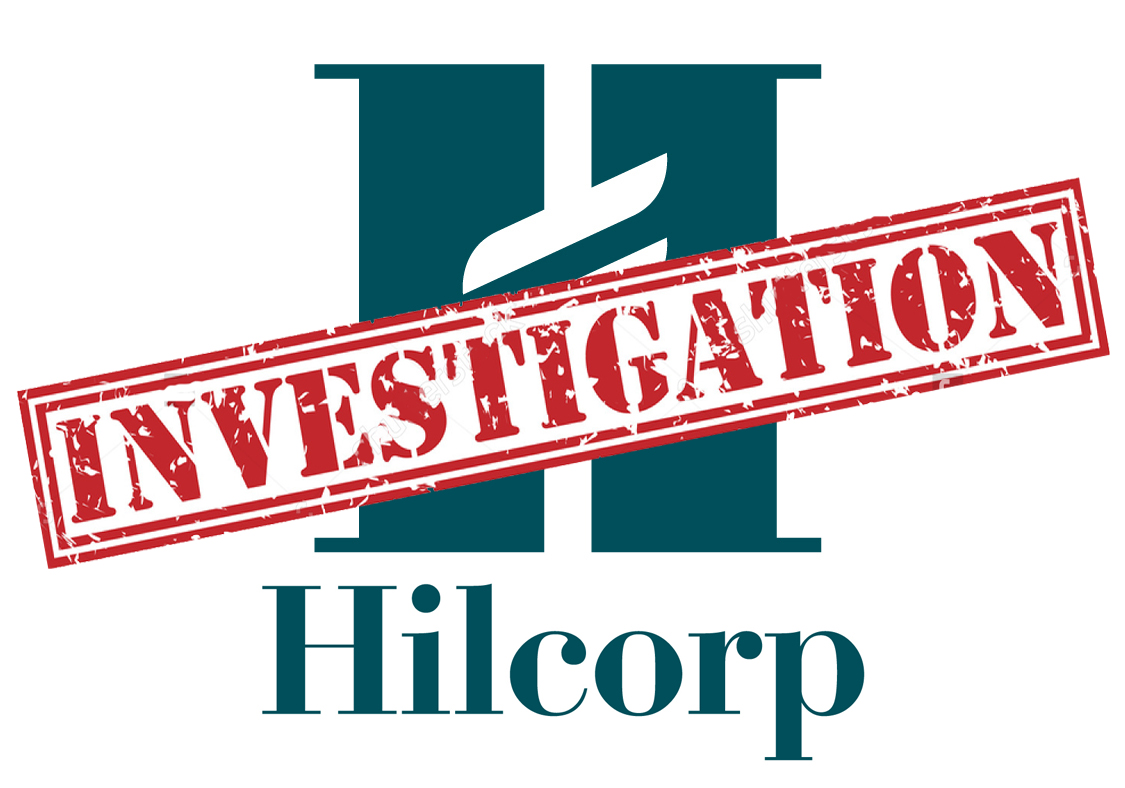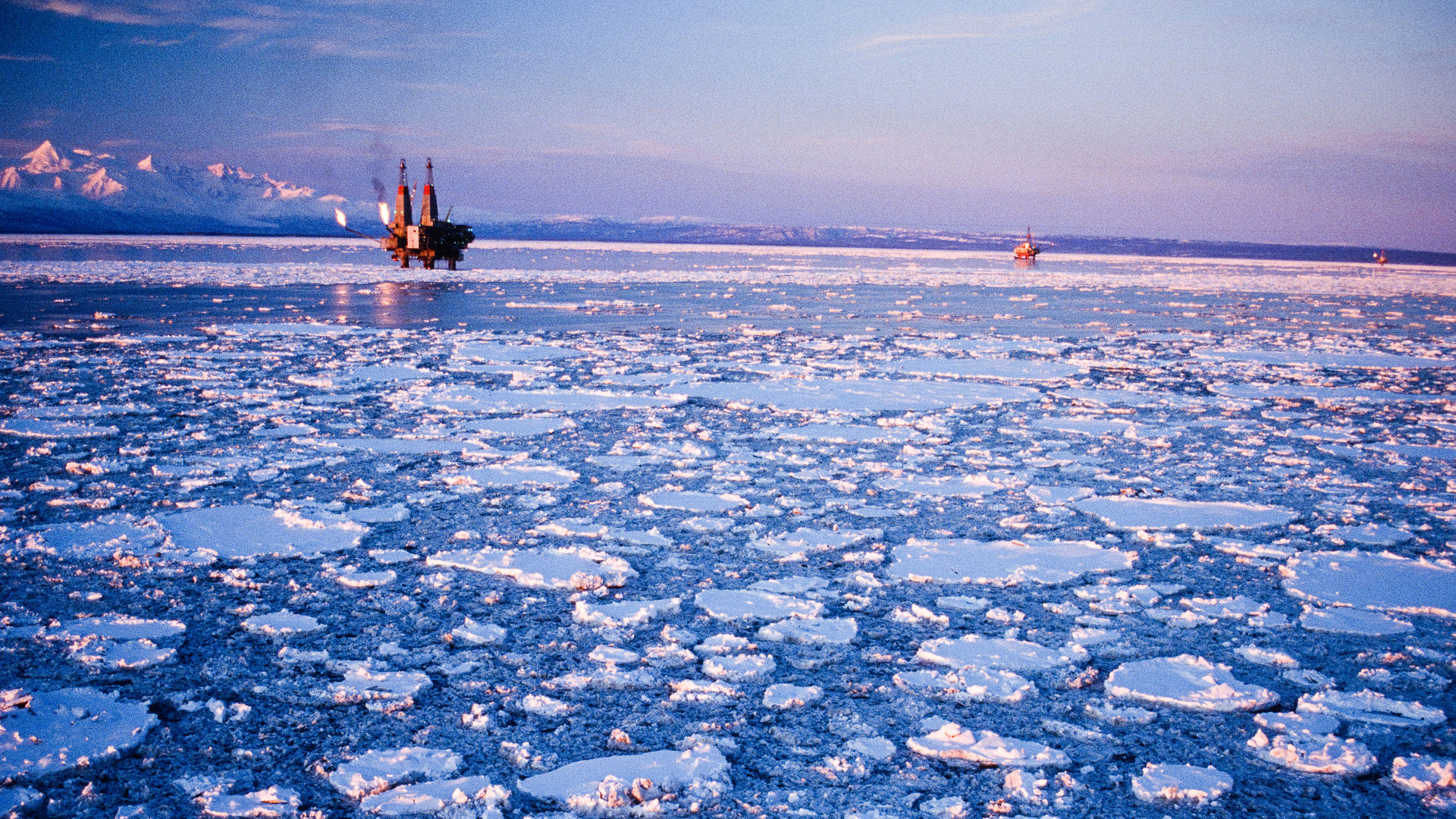(Editor’s note: This is the final story in The Revelator’s months-long investigation into Hilcorp Energy. You can find the entire investigation here.)
Newly released documents reveal that privately held energy producer Hilcorp Alaska has managed to avoid both federal and state fines in the wake of the company’s very public pipeline failure in Cook Inlet, which leaked methane gas into the fragile ecosystem for nearly four months. Cook Inlet is home to endangered beluga whales, among other at-risk wildlife.
 The federal Pipeline and Hazardous Materials Safety Administration and Hilcorp quietly signed a “consent order” more than six weeks ago that sets deadlines — some as far in the future as September 2019 — for the company to inspect and repair the damaged pipeline and additional methane pipelines associated with Hilcorp’s Middle Ground Shoal oil and gas field.
The federal Pipeline and Hazardous Materials Safety Administration and Hilcorp quietly signed a “consent order” more than six weeks ago that sets deadlines — some as far in the future as September 2019 — for the company to inspect and repair the damaged pipeline and additional methane pipelines associated with Hilcorp’s Middle Ground Shoal oil and gas field.
The consent order — a binding legal agreement privately negotiated between Hilcorp and the pipeline safety administration, signed April 11 but not posted on the government website until early May — does not require Hilcorp, the largest oil and gas producer in Cook Inlet, to conduct additional inspections of its extensive oil and gas facilities in the area. These include a second methane pipeline that failed last month, which ran from the company’s Steelhead platform to shore days before the order was signed. The pipeline was shut down, but no information has been released on how much of the greenhouse gas escaped into the environment.
Environmental groups requested earlier this year that the pipeline safety administration require a system-wide inspection of all oil and gas pipelines in Cook Inlet. An agency official not authorized to speak publicly told The Revelator that the administration is “reviewing this request and will respond appropriately.”
The federal consent order’s lack of a penalty is alarming to Lois Epstein, engineering and Arctic program director at The Wilderness Society, who reviewed it. “They should be fining the company when they have these kinds of problems,” she says.
Bob Shavelson, advocacy director at a Homer, Alaska environmental group called Cook Inletkeeper, says the consent order is a “little stronger than we have seen in the past,” but adds that oil and gas operators in Cook Inlet continue to “get special treatment from regulators.”
Kristen Monsell, a staff attorney with the Center for Biological Diversity’s Oceans Program, says the consent order fails to protect Cook Inlet’s beluga whales, fish and local communities from offshore drilling in the Inlet.
“Giving the company years to inspect and repair the rest of its damaged pipeline would be laughable if it weren’t so reckless,” she says, calling the company’s aging pipelines and infrastructure “nothing but a recipe for another disaster.” (The Revelator is published by the Center for Biological Diversity.)
Hilcorp has not issued a public statement concerning the consent order and did not respond to The Revelator’s written questions.
- Houston-based Hilcorp arrived in Alaska in 2011 when it purchased Cook Inlet oil and gas production and pipeline facilities from Union Oil Company. See “Hilcorp Runs Aground,” Part I of our series.
- Hilcorp’s cost-cutting philosophy collided with Alaska regulators. See “Hilcorp: Putting Lives in Danger,” Part II of our series.
Alaska to Conduct Oil and Gas Assessment in Cook Inlet
Although Hilcorp avoided pipeline safety fines, the Alaska Department of Environmental Conservation and the Cook Inlet Regional Citizens Advisory Council are moving forward with a joint assessment of Cook Inlet oil and gas facilities.
“The scope of the project is to perform an inventory of the oil and natural gas sub-sea infrastructure and platforms of Cook Inlet and identify the regulatory framework that dictates their operation,” stated Alaska Department of Environmental Conservation spokesperson Candice Bressler, in a May 23 email.
But the assessment will not include a visual inspection of the undersea pipelines, Bressler said. She said a taskforce of “interested regulatory agencies” has been formed to develop the scope of oil and gas infrastructure assessment. There is currently no date by which the assessment will be completed, and Hilcorp is not paying for the assessment.
The state agency issued its final report on the pipeline leak on May 22, saying Hilcorp divers completed permanent repairs on a 3/16 inch wide by 3/8 inch long crack in the pipeline on May 19 — four days after the consent order deadline to complete the permanent repair.
Methane leaked from the pipeline at a rate of between 210,000 to 310,000 cubic feet per day for nearly four months. Prior to the leak, the pipeline transported between 1.6 million and 2.5 million cubic feet of gas per day.
By comparison, Enstar Natural Gas Company’s 136,000 Alaska gas customers use about 33 billion cubic feet of natural gas a year, equal to about 665 cubic feet of gas per customer each day, according the Anchorage Daily News.
Harsh Conditions and a History of Leaks
Cook Inlet’s powerful tides and currents have long been known to cause pipelines to shift and scrape against dangerous rocks, and that’s what caused Hilcorp’s Middle Ground Shoal pipeline to crack, according to the Alaska Department of Environmental Conservation. The crack was the third for the same pipeline since 2014, which Hilcorp purchased from Exxon Mobil subsidiary XTO in 2015.
The first leak, in June 2014, lasted five days and released 240,000 cubic feet of methane a day, according to Bressler. The state “does not have an official record” of a second leak that occurred in August 2014, she said.
XTO, however, told federal regulators that both leaks were caused by rocks scraping against the pipeline, according to pipeline safety administration records. The 2014 leaks were 42 yards apart and about two-thirds of a mile from the latest failure.
The latest methane leak began in late December 2016 but was not visually verified by Hilcorp until Feb. 7. The company issued media statements and notified the Pipeline and Hazardous Materials Safety Administration it could not repair the leaking pipeline until the ice cleared from Cook Inlet.
And, the company said, it could not stop moving methane through the line. Hilcorp claimed water could infiltrate the pipeline through the crack and possibly release oil left over from when the line was used to transport crude oil rather than methane.
The company continued to pump onshore methane through the leaking pipeline to two oil-production platforms that used the gas to power their equipment. Hilcorp transported about 3,700 barrels of a mix of oil and water back to shore a day through another eight-inch pipeline that runs parallel to the methane line, federal records show.
Concerned that rocks could also damage the oil pipeline, causing an oil spill, the safety administration issued a “proposed safety order” to Hilcorp on March 17 requiring the company to visually inspect the line. Hilcorp shut down the oil pipeline on March 25 after discussions with Alaska Governor Bill Walker.
The oil pipeline remains shut down, states Bressler. Hilcorp continues to operate the repaired methane line at low pressure to supply energy to the offshore platforms — enough to operate lights and other maintenance operations.
Consent Order Requires Hilcorp to Upgrade Inspection Technology
The federal consent order requires Hilcorp to install in-line inspection monitoring technology, also known as “smart pigs,” in its Middle Ground Shoal gas pipelines.
Smart pigs are robotic devices capable of detecting gouges, metal loss, excessive bending and other anomalies in pipelines. For decades they’ve routinely been used by the oil and gas industry. The term “pig” comes from the squealing sound made by the device as it moves through a pipeline.
However, the Hilcorp pipelines in Middle Ground Shoal were not designed to use smart pig technology. Shell Oil Company installed the eight-inch pipelines in 1965, making them the oldest undersea pipelines in Cook Inlet, according to Shavelson.
The two pipelines are so old they don’t have the necessary equipment to launch and recover the pigs, said Epstein. Still, the order requires Hilcorp to somehow deploy smart pigs or an alternative federally approved technology and make necessary repairs on the failed pipeline segment by Sept. 30, 2018.
The 7.2-mile section runs from the shore to oil production Platform “A.” The leak occurred 2.6 miles from Platform A in about 80 feet of water.
Hilcorp is also required to use smart pigs and make necessary repairs to the additional gas pipelines that extend from Platform “A” to three other offshore facilities by Sept. 30, 2019.
The consent order also requires Hilcorp to conduct “high-resolution sonar inspection” of its entire Middle Ground Shoal methane pipeline system within 90 days of this year’s spring thaw. The inspection is supposed to identify sections of pipeline that are “not adequately supported” and “thus susceptible to excessive bending or current-induced vibrations that may damage” the pipeline.
In addition, the company must identify pipeline segments greater than 20 feet that are not supported by the seabed and where the gap between the pipeline and the seabed is greater than 8 inches. Federal safety officials initially sought inspections of pipeline segments greater than 10 feet not supported by seabed, according to a March 3 proposed safety order.
To accomplish these inspections, divers will need to traverse Cook Inlet’s dangerous tides to determine “those areas that require mitigation to address the threats of excessive bending and vibration induced failure.” The inspections must be completed by Oct. 31.
Hilcorp must also employ divers to inspect areas where the pipelines cross rock outcroppings in order to address the threat of additional damage.
Finally, the inspection of the pipeline segment that failed last winter must be completed by Oct. 31, 2017 and the rest of the Middle Ground Shoal gas lines by Oct. 31, 2018.
The consent order contains no cost estimation of the mandated inspections.
Carl Weimer, executive director of Pipeline Safety Trust, a Bellingham, Wash., citizen’s group that monitors pipelines nationally, said the consent order’s pipeline monitoring requirements are “reasonable.”
“Due to the short work window in Alaska it seems to us the required initial fix, sonar testing, diver inspections, modifying the pipeline to accommodate smart pigs, and then proceeding with the smart pig testing and any needed repairs all seems to be reasonable,” Weimer stated in a May 23 email.
Will Hilcorp continue to avoid punishment for the Cook Inlet leak?
The Alaska Department of Environmental Conservation considered the methane leak to be a “discharge of hazardous substance” that is prohibited unless approved by the state.
The state has not yet fined the company or sought restitution for damage to the environment. Bressler stated in a May 24 email that the state does not comment on ongoing investigations or potential enforcement actions.
Additional federal actions against the company could still be pending: Hilcorp and federal safety regulators held private discussions on May 9 that could lead to a second consent order in connection with the oil pipeline, according to an administration official not authorized to publicly discuss the negotiations.
The nature of that order remains to be seen, as do the long-term environmental impacts of Hilcorp Alaska’s four-month methane leak.

